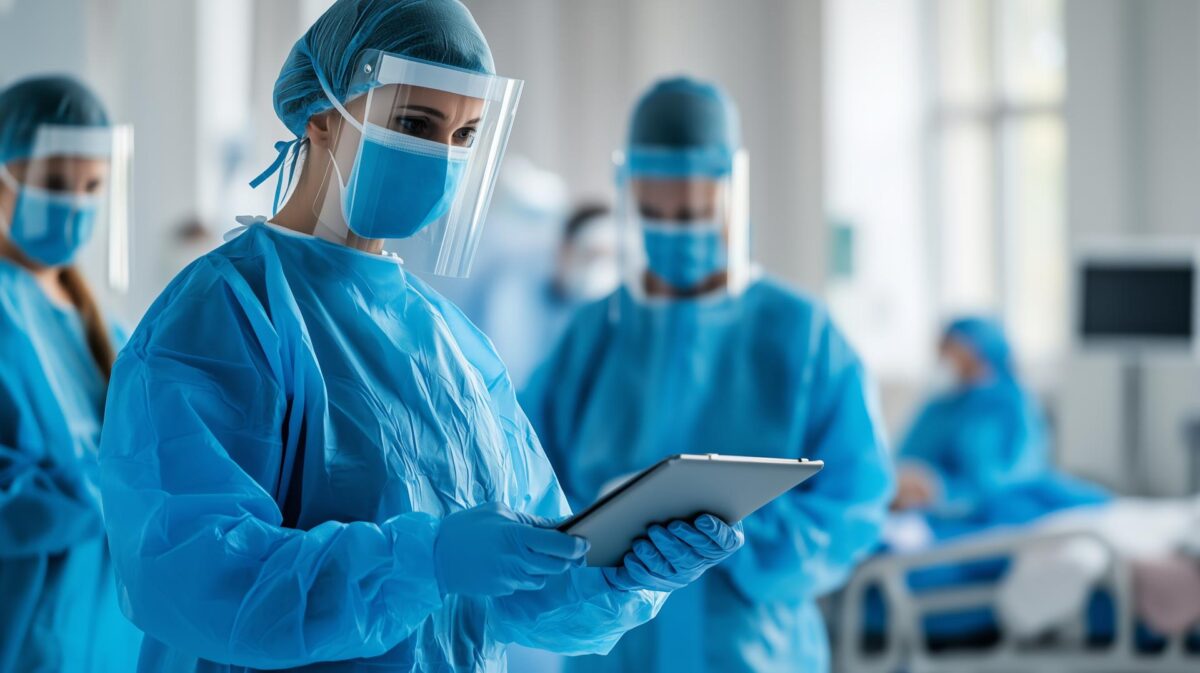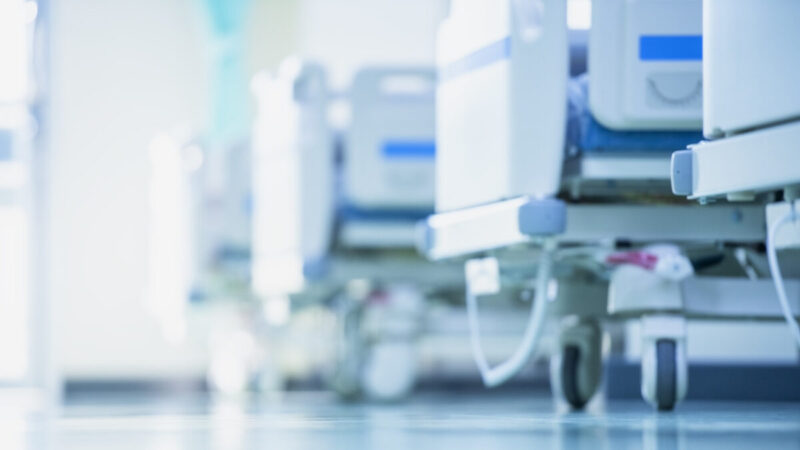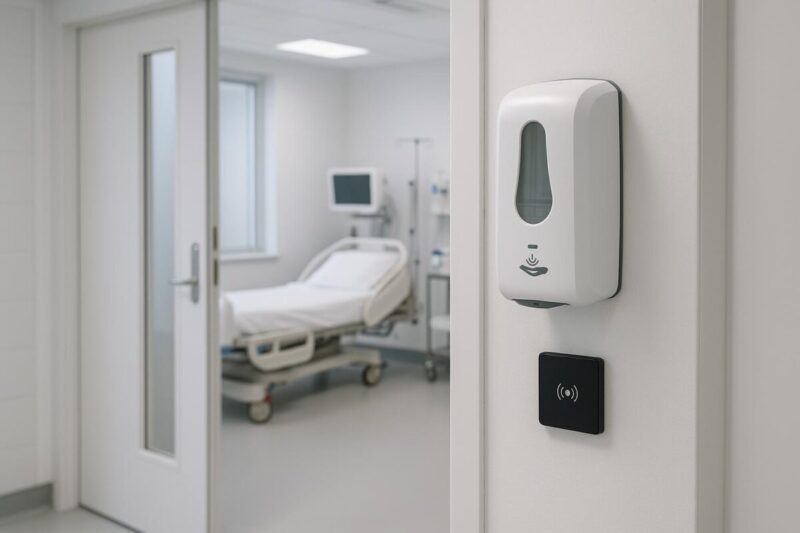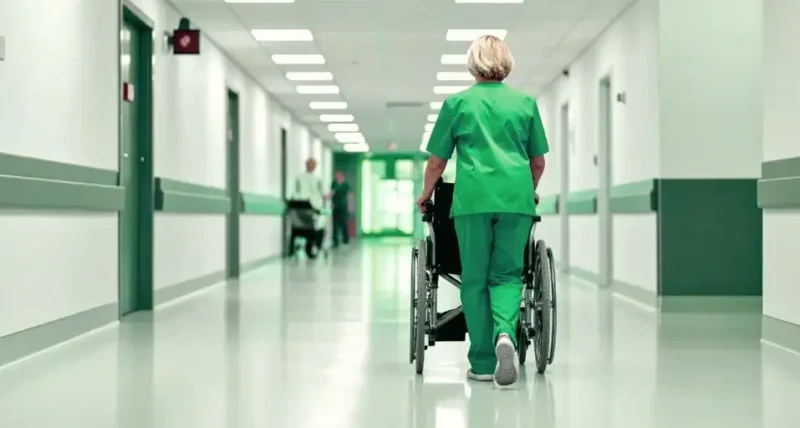contact tracing

Moving Past Manual Methods in Infection Control
In any healthcare or senior living facility, infection control is paramount. For decades, the standard response to a potential outbreak has been manual contact tracing—a labor-intensive process involving interviews, logbook reviews, and memory-based recall. While well-intentioned, this method is slow, prone to human error, and often incomplete. In a fast-paced environment where every second counts, these gaps can lead to wider transmission, putting both patients and staff at unnecessary risk.
The digital transformation of healthcare has introduced a more precise, efficient, and reliable alternative: Real-Time Location Systems (RTLS). This technology provides an automated, data-driven approach to contact tracing, transforming a reactive, manual task into a proactive, strategic advantage for infection prevention and control teams.
What is RTLS and How Does It Automate Contact Tracing?
A Real-Time Location System is a technology platform used to automatically identify and track the location of objects or people in real time, usually within a defined space like a hospital or senior care community. It uses a combination of hardware (small tags or badges) and software to create a digital map of all interactions.
When applied to contact tracing, the process is seamless. Staff, patients, and even key mobile assets are equipped with small, discreet RTLS badges. These badges communicate with sensors placed throughout the facility, logging location and proximity data. If an individual is identified as infectious, administrators can instantly generate a detailed report of every person and place they came into contact with over a specific period. This report includes:
- Direct Contacts: A list of every individual who was in the same location as the infected person.
- Duration of Exposure: The exact length of time for each interaction helps prioritize risk.
- Location History: A record of all rooms and areas visited, identifying potential contamination hotspots.
This automated approach provides a level of detail that manual tracing simply cannot match. It shifts the focus from guesswork to data-backed certainty, empowering facilities to act quickly and efficiently. The same underlying technology can also be used to improve other critical areas, such as hospital asset management and workflow optimization.
Manual vs. Automated Contact Tracing: A Clear Comparison
| Feature | Manual Tracing | RTLS-Automated Tracing |
|---|---|---|
| Speed | Days or weeks | Minutes |
| Accuracy | Low; dependent on memory | High; based on precise location data |
| Data Richness | Limited to interviews | Includes location, duration, and frequency |
| Resource Impact | High; requires significant staff hours | Low; reports are generated automatically |
| Compliance & Reporting | Manual, cumbersome documentation | Automated, audit-ready logs and dashboards |
The Broader Impact on Facility Safety and Efficiency
Automated contact tracing is more than just an infection control tool; it’s a catalyst for a safer and more efficient healthcare environment. The deep insights gathered by an RTLS platform enhance operational intelligence across the board.
Enhanced Staff Safety
The same badges used for contact tracing can be equipped with duress buttons. This provides a powerful RTLS staff safety system, allowing employees to signal for help instantly, with their precise location transmitted to security. This is crucial for mitigating workplace violence and ensuring rapid response in emergencies.
Streamlined Clinical Workflows
Location data can be used to automate workflows and reduce manual documentation. For example, the system can automatically log when a nurse enters and leaves a patient room, streamlining patient rounding compliance. This frees up valuable time for care providers and ensures that protocols are consistently met.
Data-Driven Environmental Controls
Understanding movement patterns helps identify high-traffic zones that may require more frequent sanitation. This data can also be integrated with electronic hand hygiene systems to correlate movement with compliance, or with environmental monitoring to ensure areas like isolation rooms maintain correct pressure and temperature.
Meeting U.S. Healthcare Compliance and Standards
In the United States, healthcare facilities operate under strict guidelines from bodies like the CDC, The Joint Commission, and OSHA. Automated contact tracing provides the verifiable, time-stamped data needed to demonstrate compliance with infection control mandates. During an audit or survey, administrators can pull detailed, accurate reports in moments, providing concrete evidence of a robust and responsive infection prevention strategy.
Whether in a fast-paced acute care hospital or a community-focused senior living facility, RTLS delivers the analytical power to not only meet today's standards but also anticipate future public health challenges. The ability to analyze historical data through a comprehensive RTLS analytics platform reveals trends and insights that can inform long-term safety policies.
Ready to Modernize Your Facility's Safety Protocols?
Replace outdated manual processes with the speed and precision of automated RTLS technology. Protect your patients and staff while enhancing operational efficiency.
Frequently Asked Questions
1. Is RTLS technology difficult to implement?
Modern RTLS platforms are designed for streamlined deployment. ZulaFly's cloud-hosted solution communicates with existing technology in place (including EHRs, security sensors, environmental monitoring, and location sensing hardware) where possible, reducing disruption to daily operations.
2. What about patient and staff privacy?
Privacy is a core design principle. The system tracks the location of anonymous badges, not personal identities. The data is encrypted and secure, and access is restricted to authorized administrative personnel for specific purposes like infection control and safety alerts. The system identifies "Badge 123" was near "Badge 456," not individuals by name, until necessary for intervention.
3. Can this technology be used for more than just contact tracing?
Absolutely. The same RTLS infrastructure is a versatile platform that can manage multiple challenges. It can be used for staff duress, asset tracking, workflow automation, wander management in senior living, and environmental monitoring, providing a significant return on investment.
4. How accurate is the location data?
RTLS accuracy can be configured to the specific needs of the environment. For contact tracing, it can reliably determine proximity within a few feet, which is more than sufficient to meet CDC guidelines for exposure tracking. Different technologies (like Bluetooth Low Energy, Wi-Fi, or Infrared) can be combined to achieve room-level, chair-level, or bay-level accuracy where needed.
Glossary of Terms
- Real-Time Location System (RTLS)
- A combination of hardware and software that uses wireless signals to determine the precise location of tagged assets or people within a defined area.
- Contact Tracing
- The process of identifying people who may have come into contact with an infected person to help prevent further spread of disease.
- Bluetooth Low Energy (BLE)
- A wireless communication technology used by RTLS tags to transmit location data efficiently with minimal power consumption, allowing for long battery life.
- Geofencing
- Creating a virtual perimeter for a real-world geographical area. In RTLS, this can trigger an alert if a tagged person or asset enters or leaves a specific zone.



